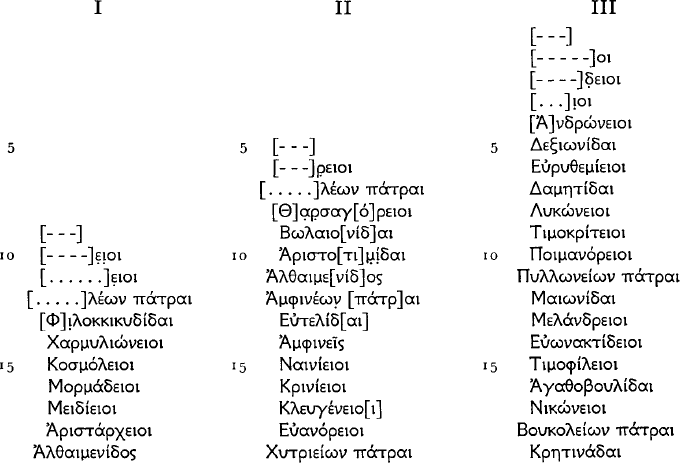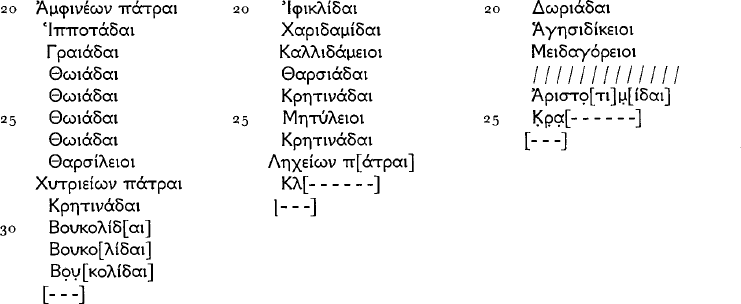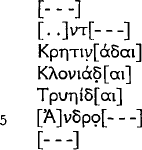IG xii. 1. 695; T. Cam. 1. In the British Museum, from Kamiros. Early third century B.C.


Guarducci, Mem. dei Lincei vi. 8 (1938/9) 124, no. xxix bis; T. Cam. 2. Kamiros.

These lists present an organization at three levels:
(a) The smallest units are patrai, with names ending either -δαι or -ειοι, rather more of the latter than the former; the only exception is II 14 Ἀμφινεῖς.
(b) These are grouped under headings, Χυτριείων πάτραι (I 28, II 19), Βουκολείων πάτραι (III 18), &c. The general term for the bodies named Χυτρίειοι, &c., is not given.
(c) The heading Ἀλθαιμενίδος at I 19, II 11, embraces several of these second-level groups. At two removes above the patrai, Ἀλθαιμενίς must be a large body, something like a tribe, and the termination -ίς is common in tribe-names.
Among the puzzling features of the list is the repetition of certain names, either consecutively in the same group or from one group to another, thus:
⊖ωιάδαι: I 23–26 under Ἀμφινήων πάτραι.
Βουκολίδαι: I 30–32 under Χυτριείων.
Κρητινάδαι: I 29 under Χυτριείων; II 24, 26 under Χυτριείων; III 19 under Βουκολείων; T. Cam. 2. 2 in a different sequence with no heading preserved.